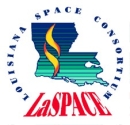



Payload 02 Information
Payload Flight Number:
Institution:
Payload Title:
Quantifying Atmospheric Infrasound with a Free Flying Acoustic Array
Student Leader:
Faculty Advisor:
Payload class:
Small
Payload ID Number:
02
Mass:
1.6 kg
Current:
200 mA
Serial Downlink:
No
Analog Downlink:
?
Serial Commands:
No
Discrete Commands:
?
Payload Specification & Integration Plan
Due: 06/27/2014
Delivered:
Payload Integration Certification
Scheduled: 08/08/2014
Actual:
Flight Operation Plan
Due: 07/31/2014
Delivered:
Final Flight / Science Report
Due: 12/12/2014
Delivered:
Abstract:
The generation and propagation of acoustic waves provide valuable constraints on source processes (e. g. volcanoes, meteorites, and severe storms) as well as atmospheric structure. However, existing acoustic and infrasound arrays, in nearly all cases, lie on the surface of the Earth and thus neglect the three dimensional radiation pattern of acoustic energy. We propose to address this shortcoming with a balloon-mounted acoustic array. The payload will consist of an acoustic array, a high altitude GPS, and an instrument deployment system. The array will include infrasonic microphones with attached data loggers separated by 12 m of wire; this system will be deployed in-flight and will extend below the payload module. This experiment will test the accuracy of existing infrasound propagation models that lack constraints in the atmosphere, search for acoustic waveguides at the tropopause, and potentially detect never-before recorded signals that do not reach the Earth's surface. The atmospheric propagation models will be evaluated by recording mine blasts from southwestern New Mexico. The existence of waveguides will be tested as the balloon transits the tropopause. The long flight time will give ample opportunities for recording novel signals in the mid-stratosphere.
Monthly Briefings:
UNC_Report_April_2014.pdf UNC_Report_August_2014.pdf UNC_Report_February_2014.pdf UNC_Report_January_2014.pdf UNC_Report_June_2014.pdf UNC_Report_March_2014.pdf UNC_Report_May_2014.pdf UNC_Report_November_2014.pdf UNC_Report_October_2014.pdf UNC_Report_September_2014.pdf UNC_july_status_report.pdf |